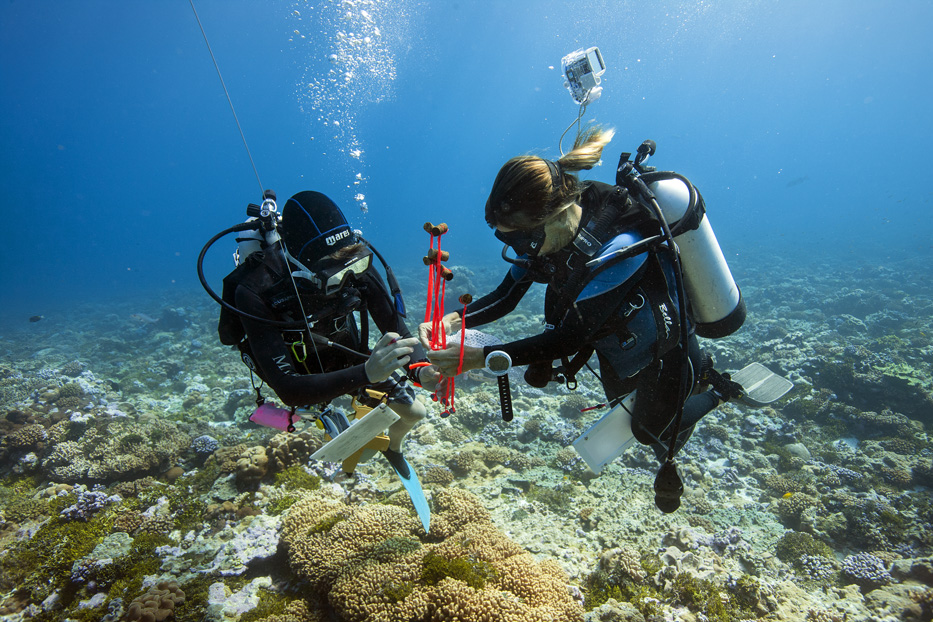Designing a Monitoring Plan
Monitoring is designed to detect or measure change, and is an essential component of adaptive management. The three main types of monitoring programs used by coral reef managers to monitor the health of coral reefs and associated communities are: routine, responsive, and participatory. The five key steps of a monitoring plan include:
1: Setting Objectives:
Managers should decide what information is required to support their management goals. The purpose of a monitoring plan will guide the selection of indicators that need to be included.
2: Selecting Indicators
The most cost-effective monitoring plans focus on indicators that reflect trends in system characteristics that are relevant to managers and trigger management responses. These may focus on ecosystem components (e.g., populations, species, communities, water quality) and processes (e.g., recruitment, ocean currents, growth rates).
3: Establishing Thresholds and Triggers
Results of monitoring programs should be compared to values that represent thresholds of ecological or social concern. When monitoring results indicate that thresholds have been reached, appropriate management responses may be triggered. The threshold may be as simple as presence/absence of a variable or include different levels of impact.
4: Choosing Monitoring Methods
The methods selected should provide a robust and reliable assessment of the selected indicators and should be appropriate to the capacity, resource constraints, and operational conditions of the people and institutions undertaking the monitoring.
5: Deciding on a Sampling Design
The type and location of the sites chosen for a monitoring program will be determined by the objectives of the monitoring program and the resources available.
After developing a plan based on the above steps, it is important to consider the resources and needs available to implement the monitoring plan including financial, technical expertise, and capacity. A monitoring plan is an important tool and can help a manager think through various aspects of monitoring design that might not have been considered otherwise including the design of long-term monitoring programs.

Researchers tagging corals at Palmyra Atoll. Photo © Tim Calver
